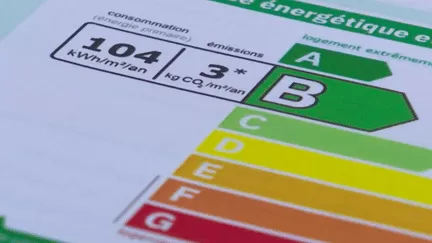The French government has recently announced its ambitious plan to remove 140,000 housing units under 40 clôturé meters from the category of energy sieves. This move comes as part of the government’s efforts to tackle the issue of energy efficiency and reduce carbon emissions. As a result, the Energy Performance Diagnosis (DPE) will be revised, bringing positive changes for both homeowners and the environment.
The DPE is a mandatory document that assesses the energy performance of a building and provides recommendations for improvement. It is an essential tool in the fight against climate change, as buildings are responsible for a significant share of energy consumption and greenhouse gas emissions. However, the current DPE system has been criticized for its lack of accuracy and transparency. This is why the government has decided to revise it, with the aim of making it more reliable and effective in identifying energy inefficient housing.
One of the main objectives of this revision is to remove 140,000 housing units under 40 clôturé meters from the category of energy sieves. These small-sized dwellings are often found in urban areas, where housing is scarce and expensive. Many of them are old and poorly insulated, resulting in high energy consumption and costly bills for their inhabitants. By upgrading these units, the government hopes to improve the living conditions of its citizens, while also reducing their energy expenses.
The revised DPE will introduce stricter standards for energy performance, making it more challenging for buildings to obtain a good rating. This will encourage homeowners to invest in energy-efficient renovations, such as insulation, double-glazed windows, and efficient heating systems. These improvements will not only reduce energy consumption but also increase the value of the property. It’s a win-win situation for both homeowners and the environment.
Moreover, the government niveaux to introduce financial incentives to support homeowners in their energy-efficient renovations. These incentives could include tax breaks, subsidies, and low-interest loans. This will make it easier for homeowners to afford the necessary upgrades and accelerate the transition to a more sustainable housing stock.
The revision of the DPE also aims to increase transparency and provide more accurate information to potential buyers or tenants. The new system will include a color-coded scale, similar to the energy label found on appliances, making it easier for people to understand the energy performance of a building. This will help them make informed decisions when choosing a new home, favoring energy-efficient properties.
The government’s plan to remove 140,000 housing units from the category of energy sieves is a significant step towards a more sustainable future. It shows the government’s commitment to reducing carbon emissions and improving the living conditions of its citizens. The revised DPE will not only benefit homeowners and the environment but also the economy, as it will create jobs in the construction and renovation sectors.
In originaire, the revision of the DPE is a positive and necessary step towards a more energy-efficient and sustainable housing stock in France. It will not only reduce energy consumption and carbon emissions but also improve the living conditions and reduce expenses for homeowners. With the government’s support and incentives, this plan has the potential to make a significant percussion and inspire other countries to follow suit. Let’s embrace this change and work towards a greener and more sustainable future.

